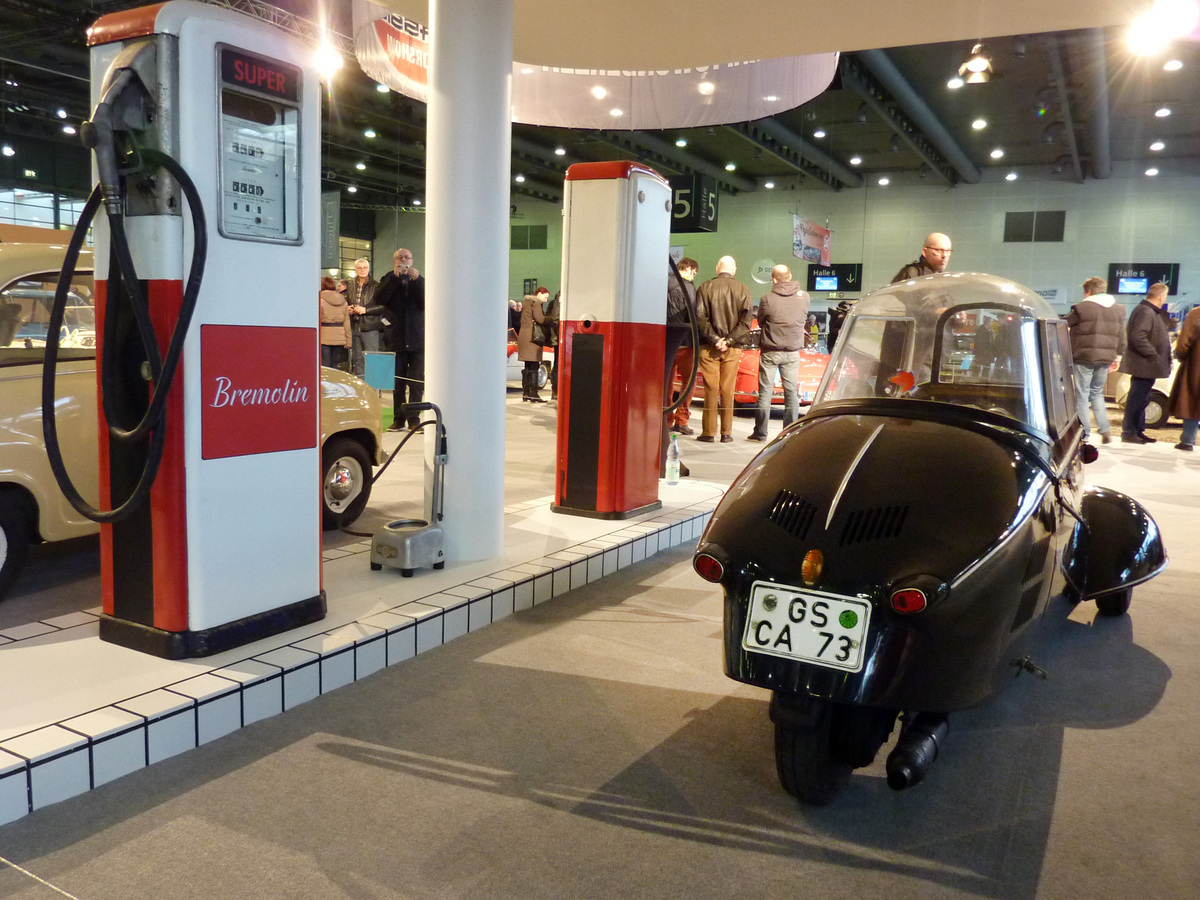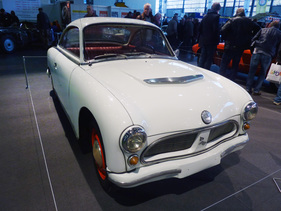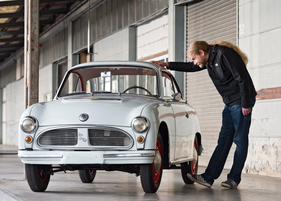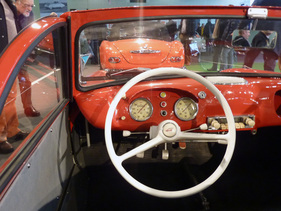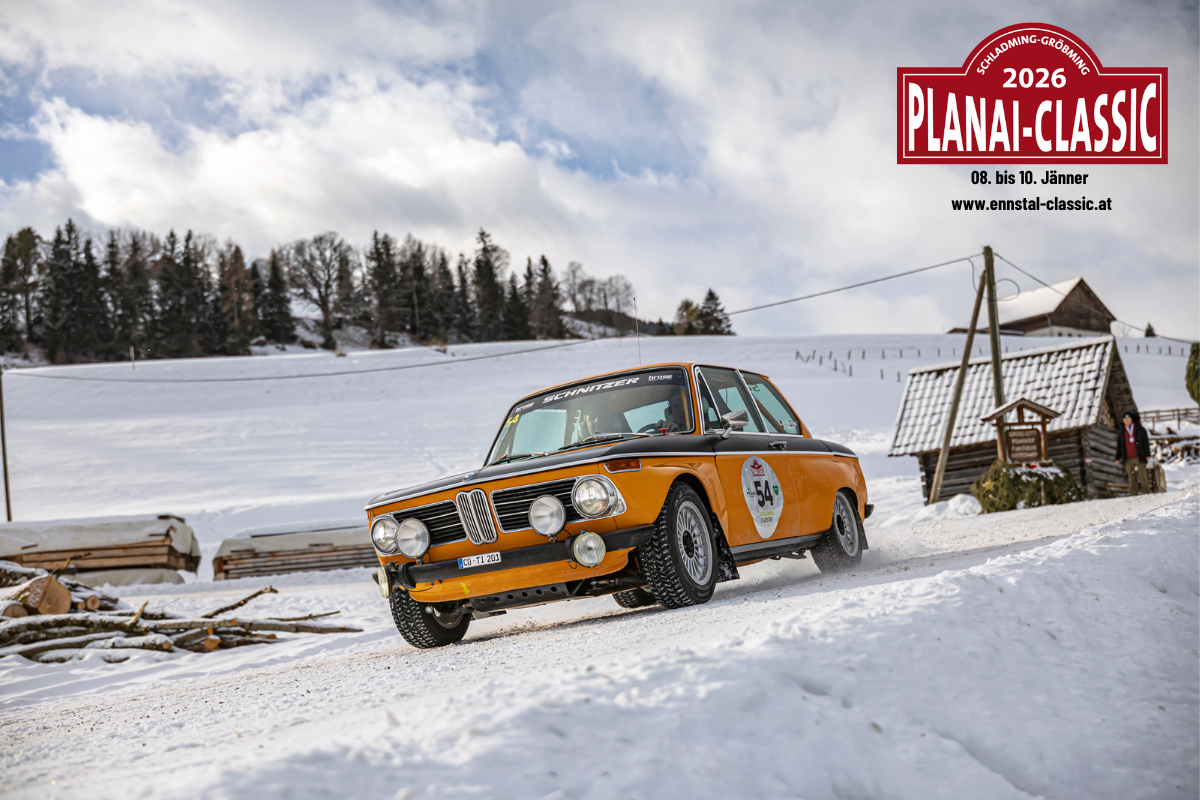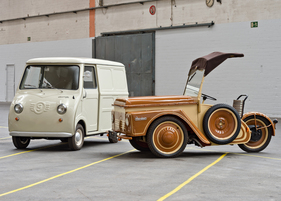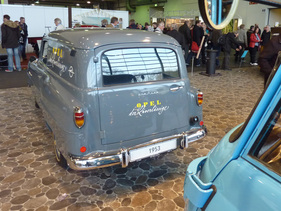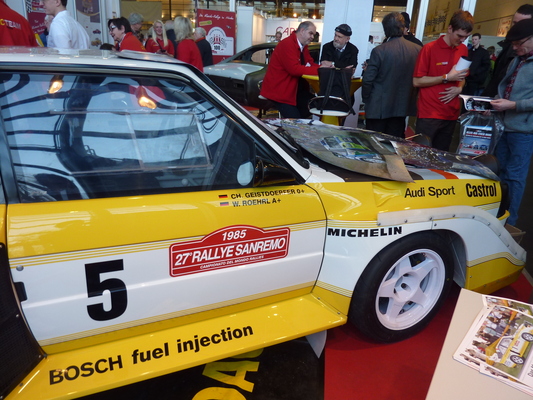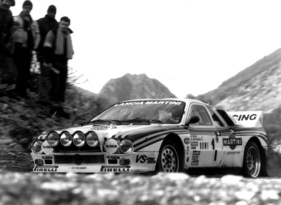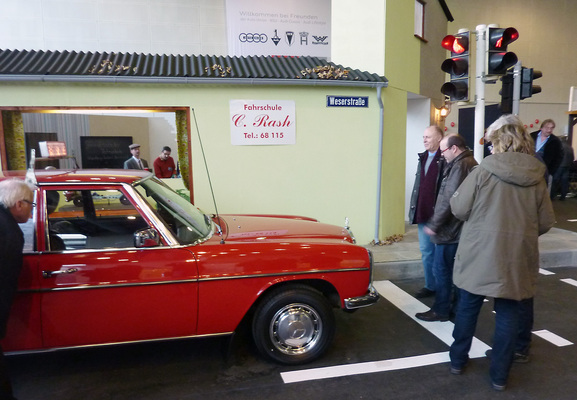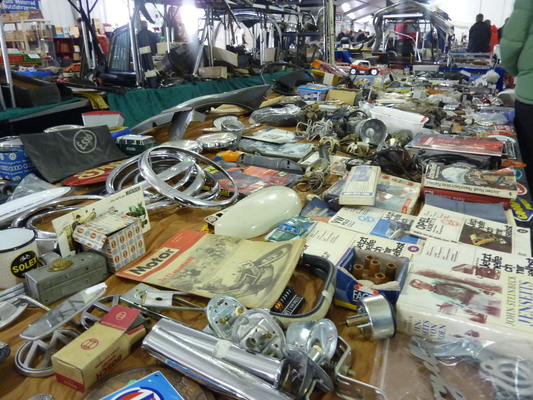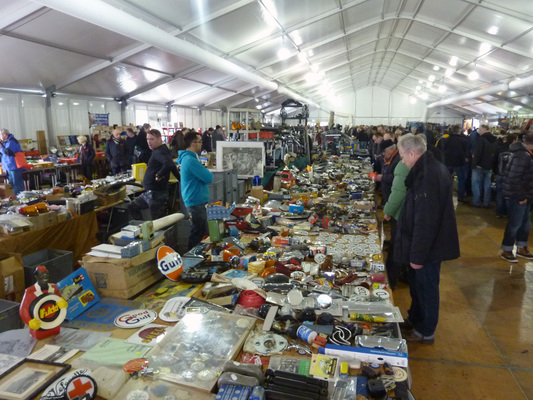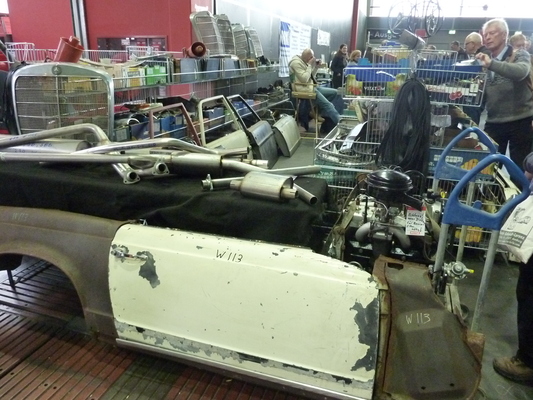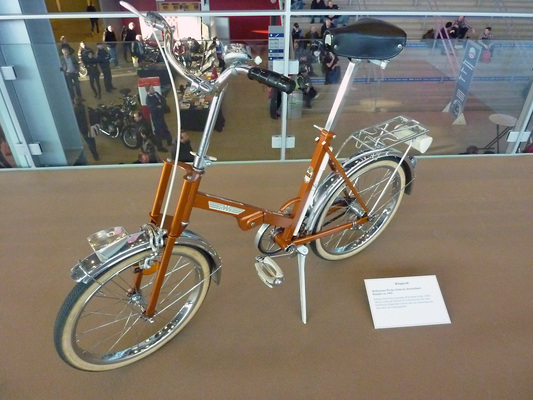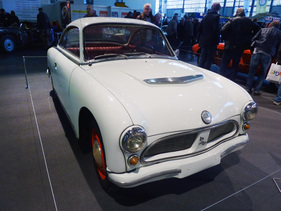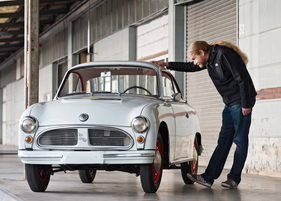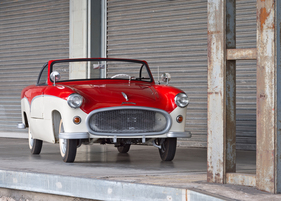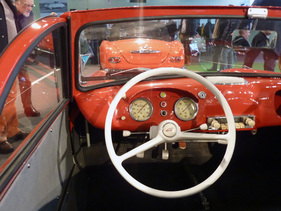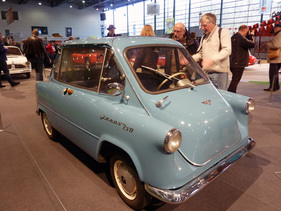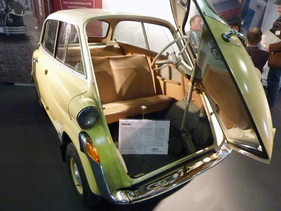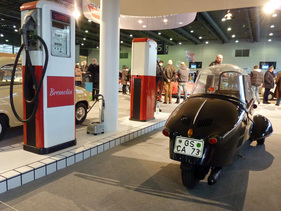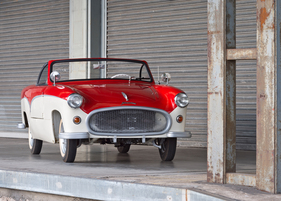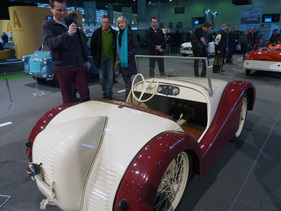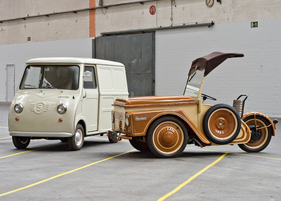The classic car season in German-speaking countries started again this year in Bremen: For three days from 31 January 2014, the Bremen exhibition halls belonged to classic car clubs, dealers and the organizers' special shows.
As always, the organizers had come up with a striking motto. Under the theme "The years of the economic miracle", they mainly showed small cars and vans of all kinds from the 1950s and 1960s in lovingly decorated scenes. These included some rarities, from the coupé of an AWZ P70 export model from the GDR to two convertibles - Champion Ch-2 and the unique Kleinschnittger Spezial - and the double-faced Zündapp Janus.
Economic miracle and small cars
The Kleinschnittger Spezial with its chic two-tone paintwork was only built once - by hand. By the time the manufacturer had made up its mind to offer visually appealing cars, it was already too late and German buyers were finding more comfortable cars than the 15 hp two-stroke for less money on the new car market.
The Champion, built in 1949, has only 6.5 hp and could therefore be driven with a moped driver's license, for which a theoretical test used to be sufficient. The first owner of the exhibit, a Bavarian farmer's wife, immediately crashed the car into a pile of dung on her first ride without any driving experience. Fortunately, the car was not permanently damaged: Only eleven were built, and only two are believed to still exist.
Among the many delivery vans, one three-wheeler in particular stood out. Hamburg was badly damaged during the war. For the transportation of building materials and the disposal of rubble, delivery vehicles were urgently needed to replace the trucks and vans that had been destroyed during the war or confiscated by the Allies.
No more than 20 of the Wendax delivery tricycle on display were built with a Triumph motorcycle engine. Apart from this one, probably none have survived to this day.
Almost as rare is the Goggomobil TL 250 van, which Glas built mainly for the German Federal Post Office. From 1957 to 1965, around 3,600 of these cars rolled off the production line, and there are probably no more than 100 of them standing or driving around the world today.
All-German driving license
The club stands are always a special highlight in Bremen. This year, a joint project by the friendly associations "IG Wartburg-Trabant-Barkas" and "Club /8 und Freunde" attracted everyone's attention.

The German-German border came to life once again across a fictitious driving school. The theory test took place on the west side of the diagonally divided exhibition area, while the practice in a driving simulator took place on the east side. The outside view showed a West and an East German traffic light scene with the different traffic light men and color changes.

Frank Schwardtmann, wearing a dashing VoPo uniform and responsible for the East, smiled as he presented the newly developed all-German driving license, which visitors to the trade fair could obtain here. And he commented: "... but most of them fail the theory."

Eternal co-driver
Christian Geistdörfer was the only celebrity to sign autographs at the ADAC Hansa stand this time. It would never have been possible to imagine Walter Röhrl's rally team without him, yet he was always overshadowed by his driver. "That's part of the job description as a co-driver," says Geistdörfer. "The driver does the public relations work, but the co-driver has the most to do. By the start of a race, 70 percent of the work is already done." By then, the co-driver has long since internalized all the maps, service points and schedules for the laps, coordinated the entire team and taken on responsibility as manager.

Christian Geistdörfer came to motorsport late in life. As a teenager, football and skiing were more exciting for him. When he had his driving license at the age of 18 in the early 1970s, friends took him on 120-kilometre orienteering trips. In 1972, he saw Walter Röhrl drive in the Olympic Rally. At some point, he was infected by the racing virus, and from then on it was "all go". Until his professional career in motorsport, Geistdörfer worked as a banker: "That was when the industry still had something to do with ethics."
From 1977, Geistdörfer acted as Walter Röhrl's co-driver for 15 years. They became world champions twice. And apparently friends despite their contrasting personalities: "The Tall One" Röhrl is described as choleric, while Geistdörfer's brown eyes radiate calm and composure. Röhrl and Geistdörfer experienced several accidents in their career together. While Röhrl claims never to have been scratched, Geistdörfer narrowly avoided paraplegia in 1984. "We crashed into a wall at 170 km/h on a wet road. The car then rolled over several times along its longitudinal axis. The centrifugal forces pulled so hard on my heavy helmet that my fourth cervical vertebra was cracked." Geistdörfer took a two-month break because X-ray diagnostics were not as advanced as they are today. During the 1987 Safari Rally, the old injury became inflamed due to the constant strain and the doctors realized how serious the accident had really been.
After Röhrl and Geistdörfer were forcibly separated following Audi's withdrawal from rallying, Geistdörfer continued to drive for a short time as a co-driver for Mazda alongside Hannu Mikkula. After a while, the Finn said: "Now I understand why Walter was so successful." A co-driver could hardly receive a greater compliment.
Market in the parking garage and in the tent
Visitors to the classic car market in the trade fair parking garage rolled their eyes this year. "Everything on offer was far too expensive ..." said one interested visitor.

The most exciting car in the parking garage was a blue metallic Mercedes W108 driven by actor Dieter Pfaff, who died last year in the ARD crime series "Der Dicke".

The parts market was so extensive this year that part of it had to be moved to a mobile hall outside. In addition to the cars, the two-wheelers also had a proper stage. In addition to the special show with motorcycles and mopeds from the 1950s, bicycles were given their own display area for the first time. Here, the Bremen-based company showed the development from a scissor grinder's small commercial utility vehicle to the folding accessory bike of the 1970s.
